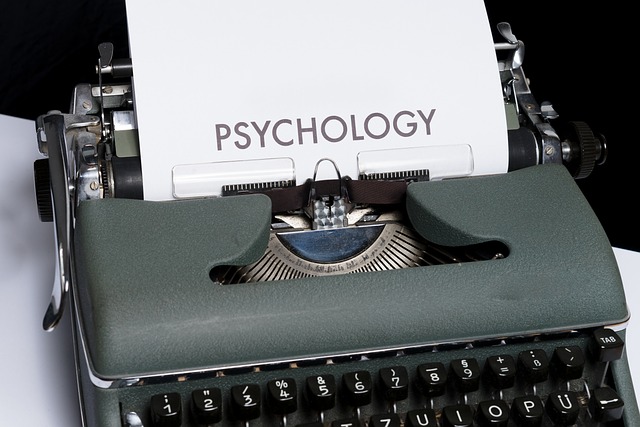Do you ever wonder why your relationships follow certain patterns or why you react the way you do to emotional situations? The answer could lie in your attachment style a psychological concept that explains how people relate to others in close relationships. Understanding your attachment style can be a game-changer in improving your emotional connection and communication with partners, friends, and family.
In this blog, we’ll break down the four primary attachment styles, explain how they affect your relationships, and offer tips for healthier connections moving forward.
What Are Attachment Styles?
Attachment theory, developed by psychologist John Bowlby, suggests that the way we form emotional bonds in childhood influences how we approach relationships in adulthood. The attachment system in the brain determines how we interact with loved ones, manage emotional intimacy, and respond to stress and conflict.
While attachment styles are rooted in early childhood experiences, they can evolve over time through life events and personal growth. Understanding your attachment style is a powerful tool for fostering healthier, more fulfilling relationships.
The 4 Attachment Styles
There are four primary attachment styles, each with its own characteristics and relationship tendencies. These styles are
1. Secure Attachment
Secure attachment is the healthiest attachment style. People with this style feel comfortable with intimacy and can depend on their partner without being overly anxious or avoidant. They’re confident in their ability to communicate, express their emotions, and resolve conflicts in relationships.
Key Traits of Secure Attachment
-
Trusting and comfortable with emotional closeness
-
Able to communicate needs and feelings openly
-
Resilient in handling relationship challenges
-
Low levels of jealousy or fear of abandonment
Impact on Relationships
Securely attached individuals tend to have the healthiest and most stable relationships. They value emotional connection and can give and receive love freely. They also manage conflicts in a calm, constructive manner.
2. Anxious Attachment
People with anxious attachment often worry about their partner’s feelings toward them. They tend to crave emotional closeness and validation, and may become easily upset by perceived signs of rejection or abandonment.
Key Traits of Anxious Attachment
-
High emotional sensitivity and need for reassurance
-
Preoccupation with the relationship and partner’s emotions
-
Fear of abandonment or being rejected
-
Tendency to become overly clingy or jealous
Impact on Relationships
Anxiously attached individuals may experience more relationship anxiety, clinginess, and emotional volatility. They often need constant reassurance from their partner, and may misinterpret neutral behavior as a sign of rejection. This can lead to conflict and stress in relationships.
3. Avoidant Attachment
Avoidant attachment is characterized by a fear of emotional intimacy. Individuals with this style tend to keep their partners at arm’s length, focusing more on independence and self-reliance than on deep emotional connection.
Traits of Avoidant Attachment
-
Discomfort with intimacy and emotional vulnerability
-
Tendency to distance themselves when they feel overwhelmed
-
High value placed on independence and personal space
-
Difficulty opening up or expressing emotions
Impact on Relationships
Avoidantly attached individuals often struggle to form deep emotional connections and may come across as emotionally distant or aloof. This can create frustration for partners who may feel neglected or rejected. Avoidant attachment can also lead to difficulties with conflict resolution, as these individuals may shut down or withdraw during arguments.
4. Fearful-Avoidant Attachment
Also known as disorganized attachment, the fearful-avoidant style combines traits of both anxious and avoidant attachment. Individuals with this style may have experienced inconsistent caregiving in childhood, leading to confusion about how to handle intimacy and trust.
Fearful-Avoidant Attachment
-
Desire for intimacy mixed with fear of it
-
Difficulty trusting others and maintaining emotional closeness
-
Emotional instability and unpredictable behavior
-
Fear of being hurt or rejected
Impact on Relationships
Fearful-avoidantly attached individuals may have a push-pull dynamic in relationships. They often crave closeness but fear being hurt or abandoned. This can result in inconsistent behavior, where they may alternate between seeking intimacy and pushing their partner away. These individuals often struggle with emotional regulation and relationship stability.
How Attachment Styles Impact Your Relationships
Your attachment style influences every aspect of your relationships, from how you communicate to how you handle conflict. Understanding your style (and your partner’s) can help you navigate challenges and build stronger, more secure connections.
1. Communication Patterns
-
Secure attachment leads to open, honest communication, where both partners feel heard and understood.
-
Anxious attachment may result in overcommunication or constant seeking of reassurance.
-
Avoidant attachment can lead to communication breakdowns, with one partner withdrawing or shutting down.
-
Fearful-avoidant attachment may cause unpredictable communication, where the person switches between seeking closeness and distancing themselves.
2. Trust and Intimacy
-
Secure attachment allows for deep emotional intimacy and trust, with both partners feeling safe to be vulnerable.
-
Anxious attachment often leads to insecurity and fears of betrayal, creating issues with trust.
-
Avoidant attachment can hinder intimacy, as the person may avoid closeness or emotional vulnerability.
-
Fearful-avoidant attachment leads to a mix of seeking closeness and fearing intimacy, often causing confusion and emotional turbulence.
3. Handling Conflict
-
Securely attached individuals approach conflict calmly and with a problem-solving mindset.
-
Anxiously attached individuals may become emotionally overwhelmed and reactive, making conflict resolution difficult.
-
Avoidantly attached individuals may withdraw or shut down during conflict, leaving issues unresolved.
-
Fearful-avoidant individuals may become unpredictable in conflict, swinging between seeking resolution and pushing their partner away.
How to Improve Your Attachment Style
While your attachment style is influenced by childhood experiences, it’s possible to grow and shift toward a more secure attachment style. Here are some steps to improve your relationship dynamics
1. Self-Awareness
Understanding your attachment style is the first step. Recognize patterns in your behavior and how they influence your relationships.
2. Practice Vulnerability
Allow yourself to be emotionally open and vulnerable with your partner, even if it feels uncomfortable. Vulnerability fosters trust and intimacy.
3. Improve Communication
Focus on open, honest communication. Be clear about your needs and listen actively to your partner’s concerns.
4. Therapy
Consider seeking therapy or couples counseling to address deeper attachment-related issues. A therapist can help you work through emotional blocks and foster healthier attachment behaviors.
Attachment styles play a significant role in shaping how we connect with others and manage relationships. By understanding the different attachment styles and their impact, you can navigate relationship challenges more effectively and work toward creating more secure, fulfilling connections.
If you’re unsure about your attachment style or how it’s impacting your relationships, take time to reflect, and don’t hesitate to seek support from a therapist to foster healthier emotional bonds.

